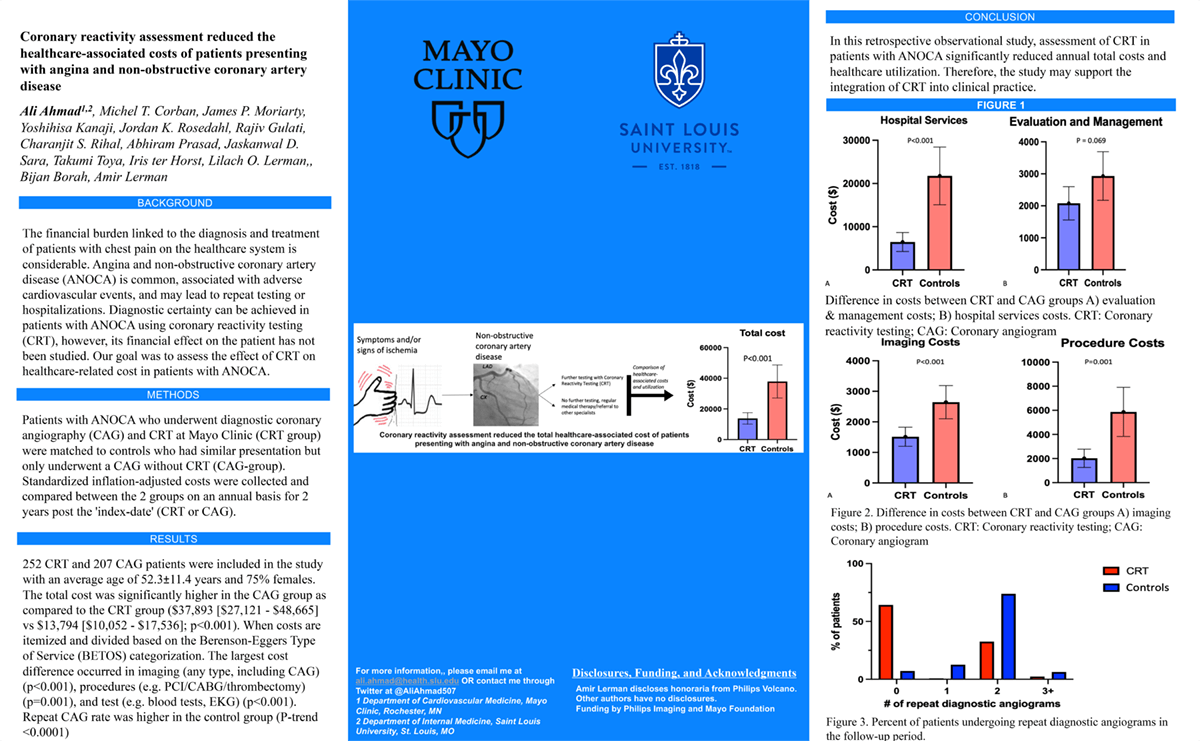
Introduction: The financial burden linked to the diagnosis and treatment of patients with chest pain on the healthcare system is considerable. Angina and non-obstructive coronary artery disease (ANOCA) are common, associated with adverse cardiovascular events, and may lead to repeat testing or hospitalizations. Diagnostic certainty can be achieved in patients with ANOCA using coronary reactivity testing (CRT), however, its financial effect on the patient has not been studied.
Methods: Patients with ANOCA who underwent diagnostic coronary angiography (CAG) and CRT (CRT group) were matched to controls who had similar presentation but only underwent a CAG without CRT (CAG-group). Standardized inflation-adjusted costs were collected and compared between the 2 groups on an annual basis for 2 years post the ‘index-date’ (CRT or CAG).
Results: 252 CRT and 207 CAG patients were included in the study with an average age of 52.3±11.4 years and 75% females. The total cost was significantly higher in the CAG group as compared to the CRT group ($37,893 [$27,121 – $48,665] vs $13,794 [$10,052 – $17,536]; p<0.001). When costs are itemized and divided based on the Berenson-Eggers Type of Service (BETOS) categorization, the largest cost differences occurred in imaging (any type, including CAG) (p<0.001), procedures (e.g. PCI/CABG/thrombectomy) (p=0.001), and test (e.g. blood tests, EKG) (p<0.001).
Impact: Assessment of CRT in patients with ANOCA significantly reduced costs and healthcare utilization over two years. Therefore, the study supports the proper integration of CRT into clinical practice.
Organization: Saint Louis University
Ahmad A, Corban MT, Moriarty JP, Kanaji Y, Rosedahl JK, Gulati R, Rihal CS, Prasad A, Sara JD, Toya T, Horst I, Lerman LO, Borah B, Lerman A